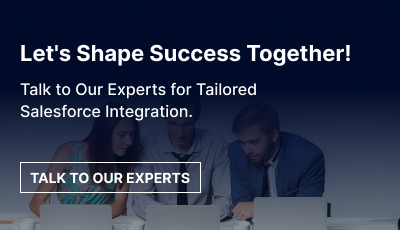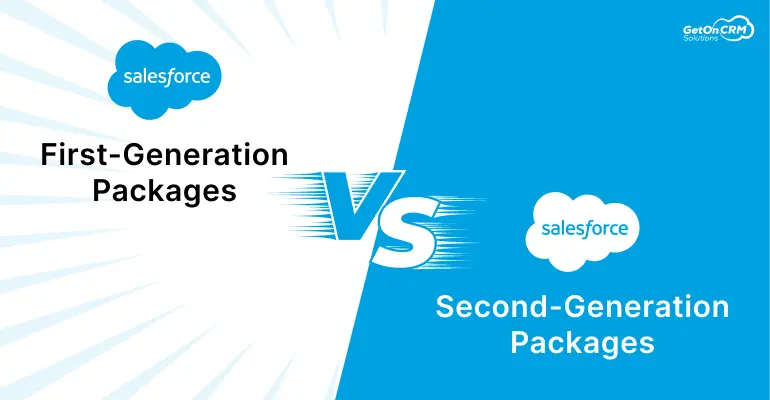The insurance industry stands at a pivotal crossroads, shaped by evolving technology, changing customer expectations, and a dynamic regulatory landscape. In this era of digital transformation, insurance firms face the pressing need to modernize their platforms – a move that’s no longer just an option but a necessity for survival and growth. This article delves into the why and how of platform modernization in the insurance sector, aiming to provide a comprehensive guide for firms looking to future-proof their operations.
Understanding Platform Modernization in Insurance
Platform modernization in the insurance industry refers to the overhaul and upgrading of IT systems and business processes. This transformation is not just about adopting new technologies; it’s about rethinking the way insurance firms operate, interact with customers, and adapt to market changes. It’s a strategic move towards agility, efficiency, and enhanced service delivery.
Historical Context: Legacy Systems in Insurance Firms
Traditionally, insurance firms have relied on legacy systems that, while robust, are often inflexible and isolated. These systems, built decades ago, need help to keep pace with the rapid changes in technology and customer expectations. The limitations of these legacy systems, including high maintenance costs and difficulty in integrating new technologies, have become increasingly apparent.
The Shift Towards Digital Transformation
The digital era has ushered in a host of technologies – from cloud computing to artificial intelligence – that are reshaping the insurance landscape. Customers now expect personalized, quick, and digital-first interactions. Insurers are recognizing that to stay competitive and relevant, they must embrace digital transformation, and at the heart of this transformation is platform modernization.
The Drivers of Platform Modernization
Market Trends Influencing Modernization
Several market trends are driving the need for platform modernization in insurance. These include the increasing competition from tech-savvy startups, the demand for omnichannel customer experiences, and the need for more sophisticated risk assessment models.
Technological Advancements Shaping the Insurance Sector
Advancements in AI, machine learning, IoT, and blockchain are providing new opportunities for insurers to enhance their services. AI and machine learning enable better risk assessment and fraud detection, IoT devices offer real-time data for personalized insurance policies, and blockchain promises enhanced security and transparency.
Customer Expectations and the Demand for Personalized Services
Today’s insurance customers expect services that are not just fast and efficient but also personalized to their needs. They seek convenience, transparency, and responsiveness – demands that can only be met through modernized platforms capable of leveraging data analytics and digital technologies.
Regulatory Compliance and Security Considerations
Insurers must navigate a complex regulatory landscape that demands compliance with various local and global standards. Modern platforms enable better compliance management and data security, which are critical in an industry that deals with sensitive personal information.
Key Components of a Modern Insurance Platform
Core System Transformation: Policy Administration, Underwriting, and Claims Processing
A modern insurance platform revolutionizes core systems like policy administration, underwriting, and claims processing. By leveraging digital tools, these processes become more streamlined, efficient, and customer-friendly. Automation plays a crucial role in reducing manual errors and speeding up processing times, enhancing overall operational efficiency.
Integration of Advanced Technologies: AI, IoT, and Blockchain
The integration of technologies like AI, IoT, and blockchain into insurance platforms is transforming the industry. AI algorithms can predict risks and customize policies, IoT devices provide real-time data for dynamic policy pricing, and blockchain introduces a new level of security and transparency in transactions.
Data Analytics and Its Role in Decision-Making
Data analytics is crucial in the modern insurance landscape. It enables firms to make informed decisions based on customer data, market trends, and risk assessments. Analytics can help identify new market opportunities, optimize pricing strategies, and personalize customer experiences.
Cloud Computing and Scalability
Cloud computing offers insurance firms scalability, flexibility, and cost-efficiency. It allows for the easy integration of new services and handling of large data volumes and supports the growing demand for mobile and web-based applications.
Strategies for Successful Platform Modernization
Assessing Current IT Infrastructure and Identifying Areas for Improvement
The first step in platform modernization is a thorough assessment of the existing IT infrastructure. It involves identifying outdated systems, pinpointing bottlenecks, and understanding the gaps in current capabilities versus desired outcomes.
Choosing the Right Approach: Build, Buy, or Partner
Insurance firms must decide whether to build their solutions, buy off-the-shelf products, or partner with technology providers. This decision depends on factors like budget, in-house expertise, and specific business needs.
Managing the Transition: Minimizing Disruption and Ensuring Continuity
Transitioning to a modern platform requires careful planning to minimize operational disruptions. That includes employee training, phased rollouts, and maintaining a parallel run of old and new systems for a smooth transition.
Budgeting and Cost-Benefit Analysis
A detailed budgeting plan and cost-benefit analysis are crucial. Firms need to consider the long-term benefits of modernization against the upfront costs, ensuring that the investment aligns with their strategic objectives.
Also Read: Steps To Ensure Your Insurance Platform Modernization Partner Is A Perfect Match
Overcoming Challenges in Modernization
Dealing with Legacy System Constraints
One of the biggest challenges is dealing with the constraints of legacy systems. It includes technical debt, compatibility issues, and the risk of data migration.
Addressing Cultural and Organizational Change
Modernization is not just a technical challenge but also a cultural one. Firms must manage the change in organizational culture, encouraging adaptability and a mindset shift among employees towards new technologies and processes.
Ensuring Data Security and Privacy
In an industry that handles sensitive data, ensuring security and privacy is paramount. Modern platforms must comply with data protection regulations and employ robust cybersecurity measures.
Navigating Vendor Selection and Management
Choosing the right technology partners and managing these relationships is critical. Firms must evaluate vendors based on their expertise, support capabilities, and alignment with the firm’s strategic goals.
Case Studies: Success Stories in Insurance Platform Modernization
Guardian Group’s Digital Transformation with Sutherland’s Cloud-Based Solutions
Background: Guardian Group faced challenges with manual processes and inefficiencies in their operations.
Solution: Implementation of Sutherland’s cloud-based solutions.
Outcomes:
- Approximately 25% reduction in manual efforts and associated labour costs.
- 20% reduction in claims-related processing turnaround time.
- 100% digitization of forms, making them available online.
Impact: This transformation led to significant operational efficiencies and improved customer service.
U.S.-Based Life Insurance Company’s Legacy Platform Upgrade with Cognizant
Background: The company struggled with disparate and duplicative legacy systems due to multiple mergers and acquisitions.
Solution: Modernizing IT with Business Process as a Service (BPaaS) solutions.
Outcomes:
- Streamlined operations by consolidating legacy systems.
- Enhanced efficiency and reduced operational complexities.
Impact: The modernization positioned the company for better scalability and adaptability in the digital insurance landscape.
Society Insurance’s Business Modernization with Azure
Background: Society Insurance needed to enhance customer experience and operational speed.
Solution: Transition to Microsoft Azure cloud platform guided by 3Cloud.
Outcomes:
- Improved customer experience through decreased processing times for policies and claims.
- Enabled rapid expansion of services and capabilities.
Impact: The move to Azure provided Society Insurance with a robust platform for growth and improved service delivery.
DXC Technology’s Approach to Modernizing Insurance IT
Background: Insurance companies are facing challenges with outdated mainframes and COBOL systems.
Solution: Adopting a left-to-right modernization approach, including open-source frameworks, outsourcing, APIs, and transformational software.
Outcomes:
- More agile and flexible IT infrastructure.
- Enhanced ability to integrate new technologies and tools.
Impact: This approach, though time-consuming, provided a comprehensive modernization path, crucial for staying competitive in the industry.
The Future Landscape of Insurance Platforms
The Evolving Role of Insurance Firms in a Digital World
As technology continues to evolve, so will the role of insurance firms. This part will discuss how insurance companies can adapt to these changes and position themselves as innovators and leaders in the digital age.
Preparing for Continuous Innovation and Adaptation
The key to future-proofing insurance platforms lies in building a culture of continuous innovation and adaptation. This section will provide insights on fostering an environment that embraces change and encourages ongoing learning and development.
Conclusion
The transformation journey in the insurance industry, highlighted by the successes of firms like Guardian Group and Society Insurance, underscores the importance of embracing digital modernization. Adopting technologies like AI, IoT, and blockchain is critical to enhancing efficiency and customer service. As the industry evolves, insurance firms that prioritize innovation and adaptability will be best positioned to thrive in the digital era. In short, the future of insurance lies in agile, customer-centric modernization.
Frequently Asked Questions on Insurance Firm Platform Modernization
What challenges do insurance firms face with legacy platforms?
Legacy platforms lack integration, are costly to maintain, and slow down claims and policy management.
How does modernization improve operational efficiency?
It streamlines workflows, connects data across departments, and enables real-time reporting—reducing delays and inefficiencies.
Can modernization help with product innovation?
Yes. Modern platforms allow insurers to launch new policies quickly, adapt pricing models, and respond faster to market trends.
How does modernization impact customer trust?
Improved accuracy, transparency, and faster service increase customer confidence and loyalty toward insurance providers.
Is modernization a one-time project or continuous?
It’s continuous. As technology evolves, insurance firms must regularly upgrade and enhance systems to stay competitive.























